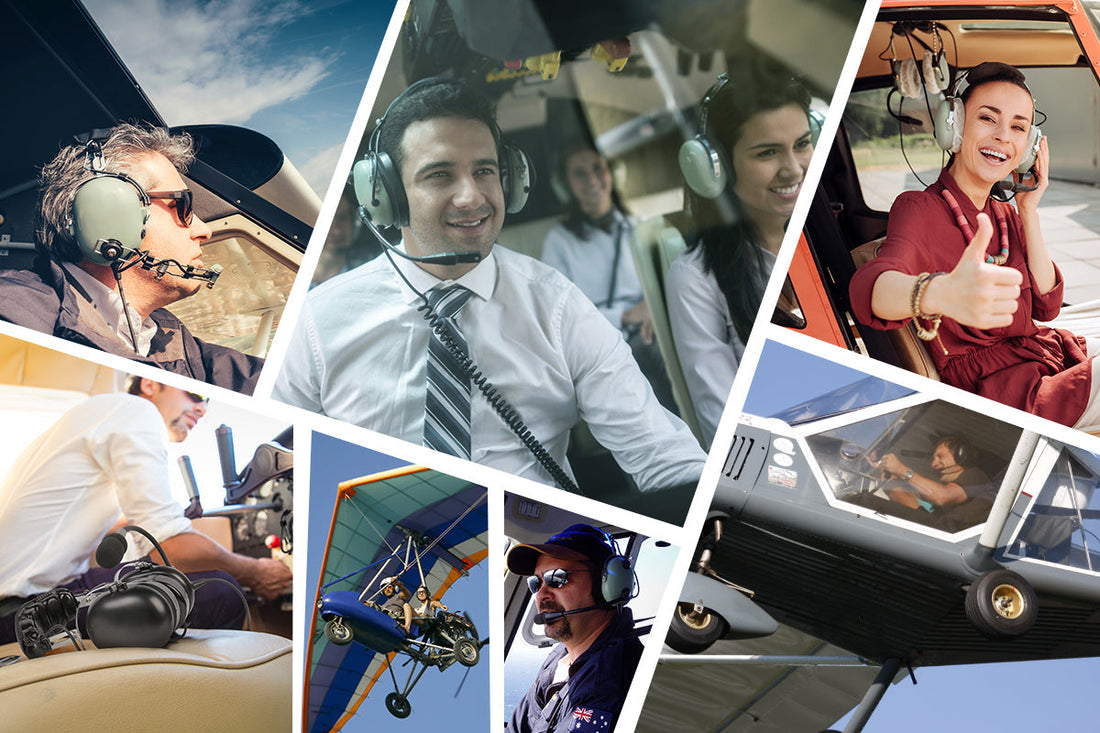
What changes are coming to aviation headsets in the eVTOL era?
Share
With the rapid development of technology, the era of eVTOL (Electric Vertical Takeoff and Landing Vehicle) is coming. This innovation not only changes the way we imagine the future of aviation, but also presents new challenges and opportunities for aviation headset design. Today, let's explore those changes that will come to aviation headsets in the eVTOL era.

Innovations in Noise Reduction Technology
The eVTOL flying machine brings a new flying experience to passengers with its unique vertical takeoff and landing method. However, this kind of aircraft generates large noise during take-off, landing and flight, which requires aviation headsets to have more efficient noise reduction capability.
Upgrade of Active Noise Reduction: Active Noise Reduction (ANR) will be further upgraded to achieve a higher level of noise cancellation through more accurate acoustic wave analysis and generation techniques.
Optimization of Passive Noise Cancellation: While active noise cancellation dominates, passive noise cancellation (the use of denser acoustic materials) will be used as a complementary tool to further optimize the noise cancellation effect of the headset.

Enhancement of communication and intelligent functions
In the eVTOL era, aviation headsets should not only have excellent noise reduction capabilities, but also meet the needs of pilots and passengers in terms of communication and intelligence.
Integrated Communication System: aviation headsets will integrate a more advanced communication system to ensure that pilots can receive and send information clearly and accurately during flight. This will include not only high-definition voice communication capabilities, but may also include security features such as encrypted data transmission to ensure reliable and secure communications.
Intelligent control: with voice commands or gesture control, passengers can easily adjust the volume, switch channels or perform other operations. At the same time, the headset may also integrate an environmental monitoring function to automatically adjust the noise reduction effect according to the noise level of the aircraft.

Improved comfort and ergonomics
In the eVTOL era, the comfort and ergonomics of aviation headsets will also be further improved.
Lightweight design: with the advancement of material science, aviation headsets will be made of lighter materials to reduce the wearing burden of pilots.
Ergonomic Optimization: The headset will be more ergonomically designed to ensure that it remains comfortable to wear for extended periods of time.This may include adjusting the shape and size of the headset, as well as the way it is worn.
Versatility: The aviation headset will have multiple functional modes to suit different flight scenarios and needs.it will provide efficient noise reduction during flight and clear voice transmission during ground communications.

With the advent of the eVTOL (electric vertical take-off and landing) era, aviation headsets are about to usher in an unprecedented technological innovation. In terms of noise reduction technology, communication and intelligent functions, comfort and ergonomic design, as well as adapting to the needs of diverse flight scenarios, aviation headsets will realize significant improvements.